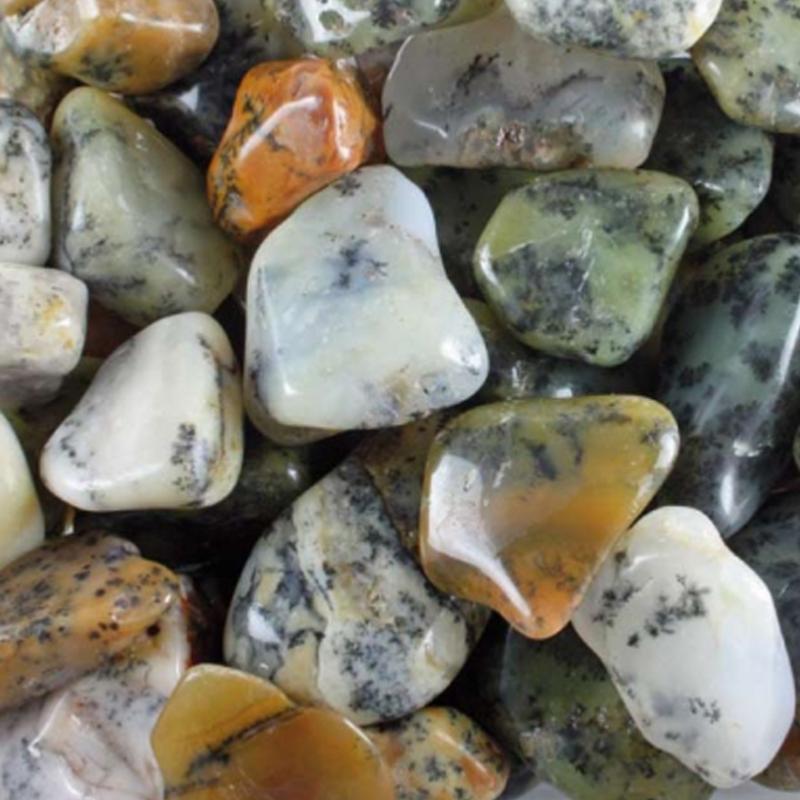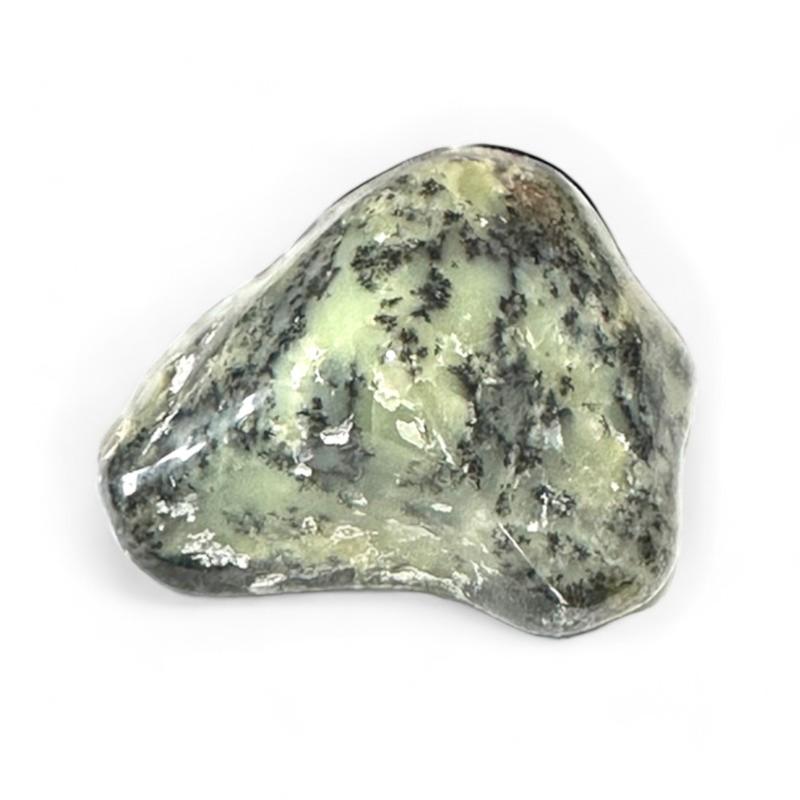Dentrite opal Brazil A (rolled stone)
OPAD-0110-20
- Regular price
-
4,90€ - Regular price
-
- Sale price
-
4,90€
Couldn't load pickup availability
Learn more
OPAD-01
Origin: Brazil
Grade: A
10-20g - About 25-35mm
20-30g - About 35-40mm
Origin:
Brazil
Grade:
A = good
Dentrite opal tumbled stone from Brazil.
Sold individually.
Weight of 10-20g and 20-30g
Colors and patterns may vary from one stone to another.
An opal is composed of hydrated silica, with traces of uranium, magnesium, calcium, aluminum, iron, arsenic, sodium and potassium. It also has a high water content which can reach up to 20% depending on the variety.
Opal forms during alternating wet and dry periods. Precipitation loaded with various elements infiltrates into the substrate. Then in dry periods, evaporation will allow the formation of upper layers of chalcedony and quartz.
The etymology of the word opal comes from the Sanskrit upala meaning precious stone. We notice that opal is the only gem that is splendid without any cutting first.
For decades, the origin of the magnificent colors of noble opals was not explained until 1965, when the scanning electron microscope appeared. Thus, scientists were able to highlight the structure of opals. Made up of spheres of varying dimensions, opals have a milky appearance; they are common opals. In noble opals, the spheres are of identical dimensions and the light then interferes and produces this incredible multi-colored appearance.
It should be noted that water has a great importance in the appearance and behavior of the opal. It is not uncommon to see raw opals presented to the public in containers filled with water.
Opal has a hardness of 5.5 to 6 on the Mohs scale. For comparison, diamond has the highest hardness, 10 on this same scale.
According to Greek mythology, opal was associated with Zeus's tears of joy after his victory against the titans. Her tears upon contact with the ground transformed into opals. This legend mainly concerns blue opal. It is a common opal in various shades of blue. It was even thought that opal gave its wearer powers of clairvoyance and divination.
Among the Romans, opal is a stone of hope. Pliny the Elder tells the story of Nonius, a senator dismissed by Mark Antony (83 - 30 BC), because he did not want to give him an opal. Marc-Antoine absolutely wanted to offer it to Cleopatra. Nonius preferred to flee with only his precious opal and his collection of stones. According to an 18th century legend, Nonius opal was found in the ruins of Alexandria.
In ancient times, opal was considered a precious stone. In the Middle Ages, blonde women wore opal necklaces to preserve the color of their hair. Opal also had the name “ophthalmios” which literally translates as “eye stone”. Indeed, it was thought to have eye protection properties.
Many writers describe this stone by comparing it to fireworks, volcanoes, galaxies, etc. The Bedouins explained that this stone fell during storms enclosing lightning.
In India, a legend says that the Rainbow Goddess was so beautiful that she was constantly courted, even harassed. She then chooses to transform into opal.
However, opal was considered a stone of misfortune. A myth from a novel by Sir Walter Scott entitled Anne of Geierstein or the Daughter of the Mists, published in 1829, harmed the stone. Indeed, the heroine Lady Hermione died after her opal received holy water. She was accused of witchcraft. In a few months, the opal market suffered a 50% drop.
But a more reasonable explanation emerged: 19th century lapidaries and stone setters had difficulty working this stone without damaging it. The frequent breakage associated with this stone gave the opal a connotation of bad luck.
The main deposits of opal are in Australia, USA, Spain, etc.
The dendrite opal stone is a stone to which virtues are highly appreciated by magicians, shamans and other magic users. It is known to have many qualities, to provoke magical and mystical experiences. Furthermore, it is renowned for providing magic and luck to its wearer. She has the reputation of having within her the wisdom of shamans, alchemists, magicians and masters of spiritualism.
This opal is commonly called white opal with dendrites or Merlinite. This variety of white opal features manganese veins. Its name Merlinite comes from the legend of Merlin the Enchanter, sorcerer of the Round Table, because dendrite opal was his favorite stone.
The term dendrite comes from the Greek dendron meaning tree. Dendrite opal can look like it was painted by human hands. It seems to represent imaginary landscapes, bushes, trees, etc.
The main deposits are located in Australia and the United States.
Dendrite opal has opening and accessibility abilities. It allows its wearer to develop their communication skills with others. It opens up to empathy and compassion. The person is sincerely interested in their interlocutor. She wants to help him and shows a lot of understanding.
This fabulous stone reveals optimism and joy of life. Its wearer feels liberated and happy. The person has many plans and has the desire to carry them out. This stone refocuses it on the present moment. It gives him the means to forget the traumas of the past and to face the future serenely.
Dendrite opal provides peace and serenity. The simple act of looking at it and guessing landscapes or all kinds of settings soothes its wearer. He feels invaded by a sort of infinite sweetness. It facilitates introspection and meditation. The person reconnects with their inner self. This stone also promotes concentration.
Dendrite opal is a stone of balance. Its colors, composed of black and white, are reminiscent of yin and yang. It is also known to increase one's intuition and clairvoyant gifts. Furthermore, it has a reputation as a lucky charm.
Features
Color :
- Green
- Brown
- White
Astrological sign:
Stone Type:
- Rolled Stones
Age :
Gender :



Dentrite opal Brazil A (rolled stone)
- Regular price
-
4,90€ - Regular price
-
- Sale price
-
4,90€
-
100% SECURE PAYMENT
Paypal, credit card, check, transfer
-
FREE DELIVERY
from 40€ purchase
-
SATISFIED OR REFUNDED
14 days to change your mind
-
CUSTOMER SERVICE AVAILABLE
contact@laboiteacailloux.com
to receive all our offers, good deals and new products from La Boite à Cailloux




